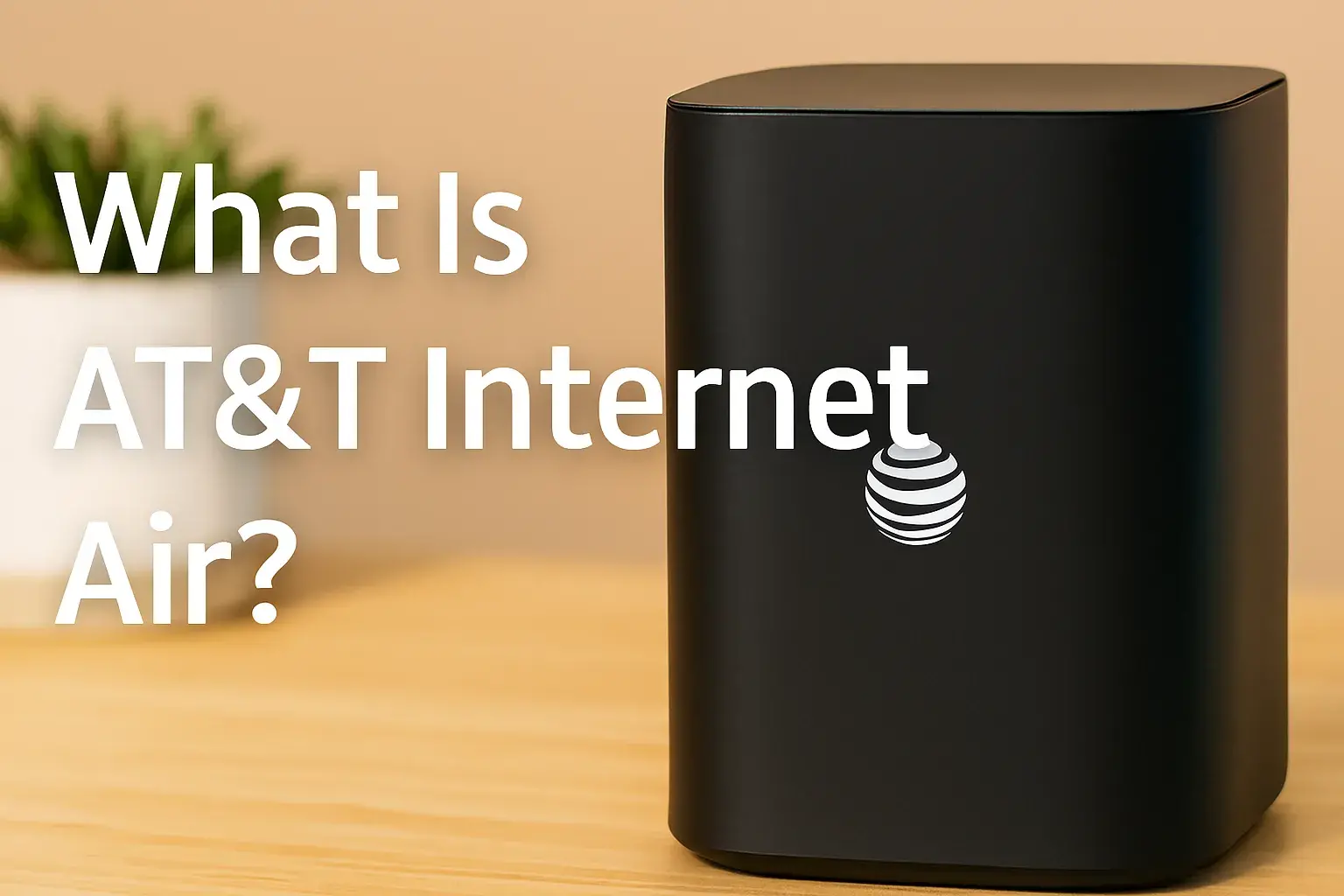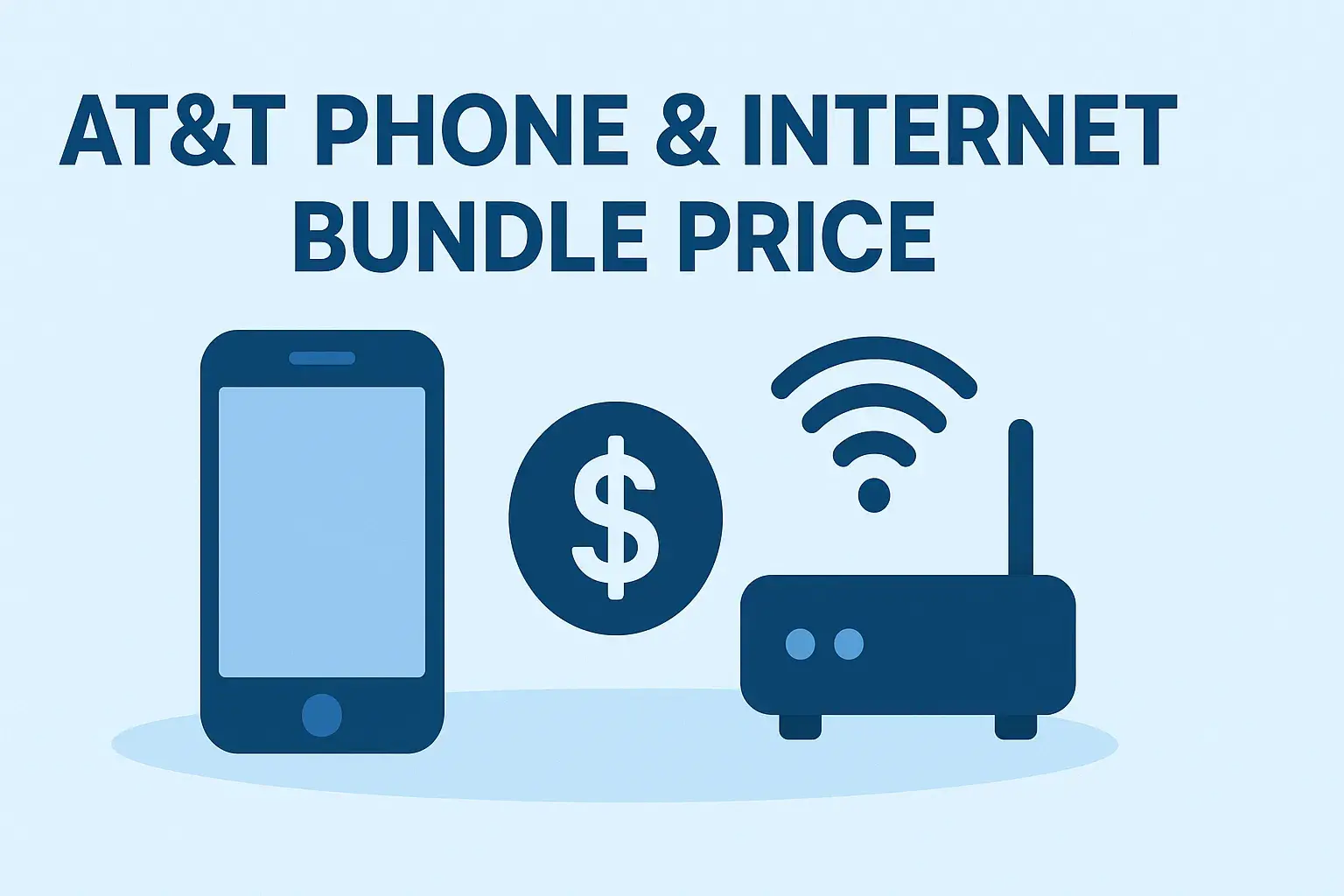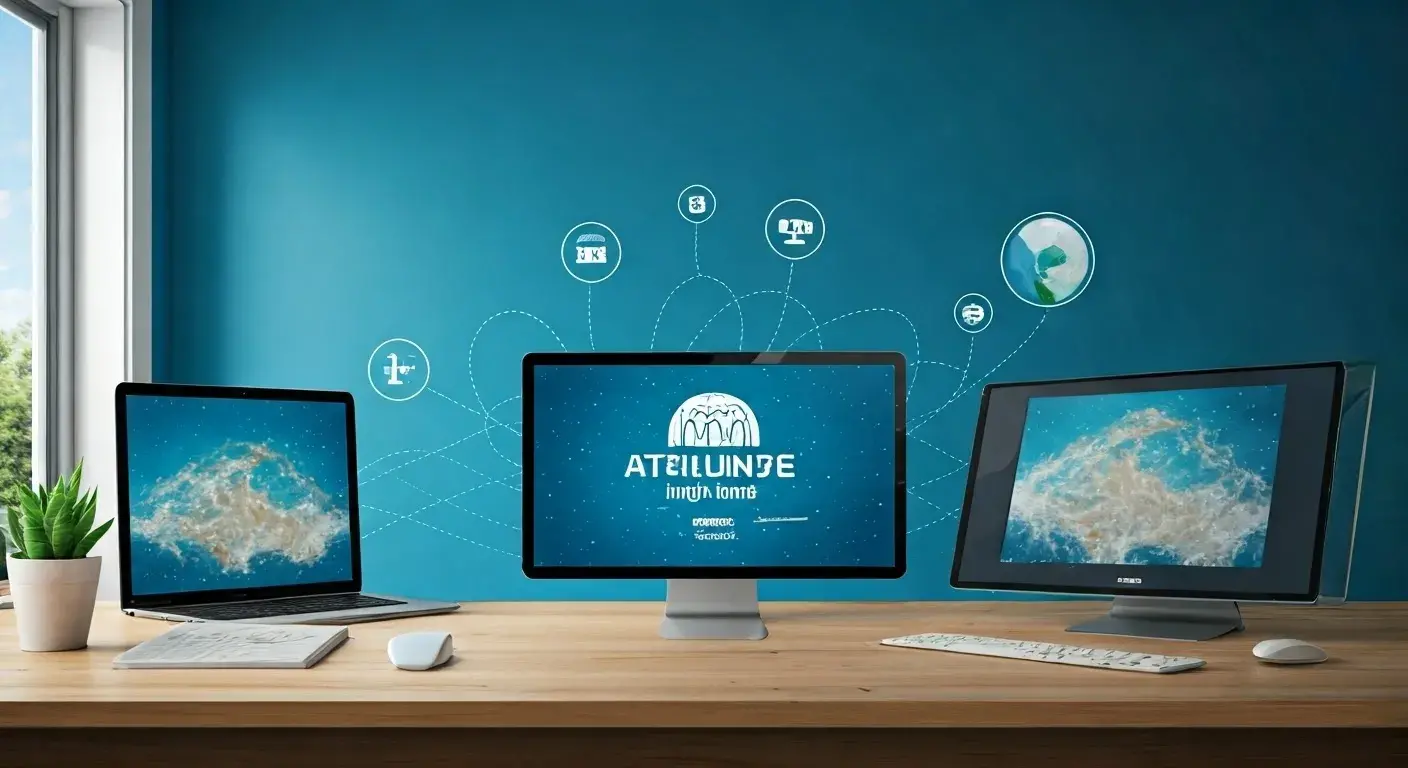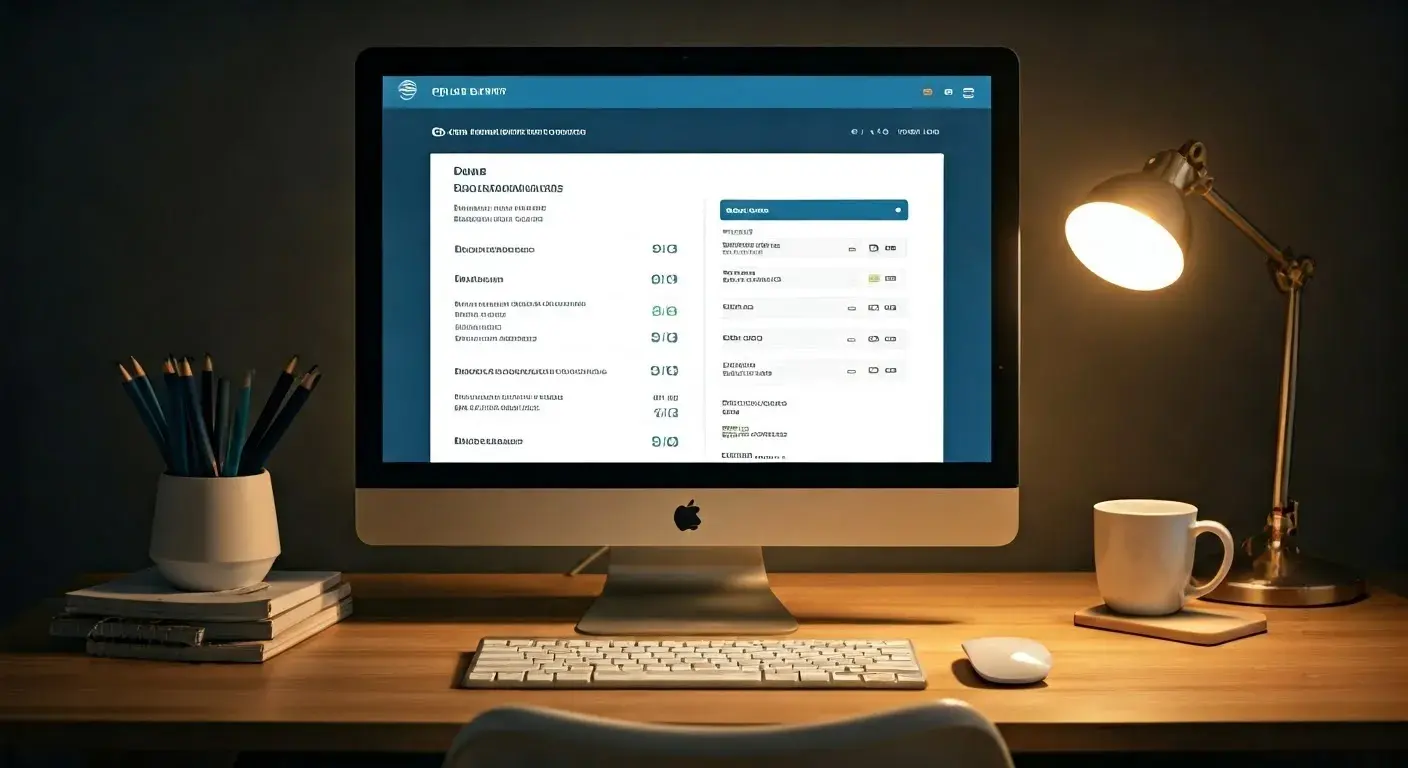What is AT&T shutting down?
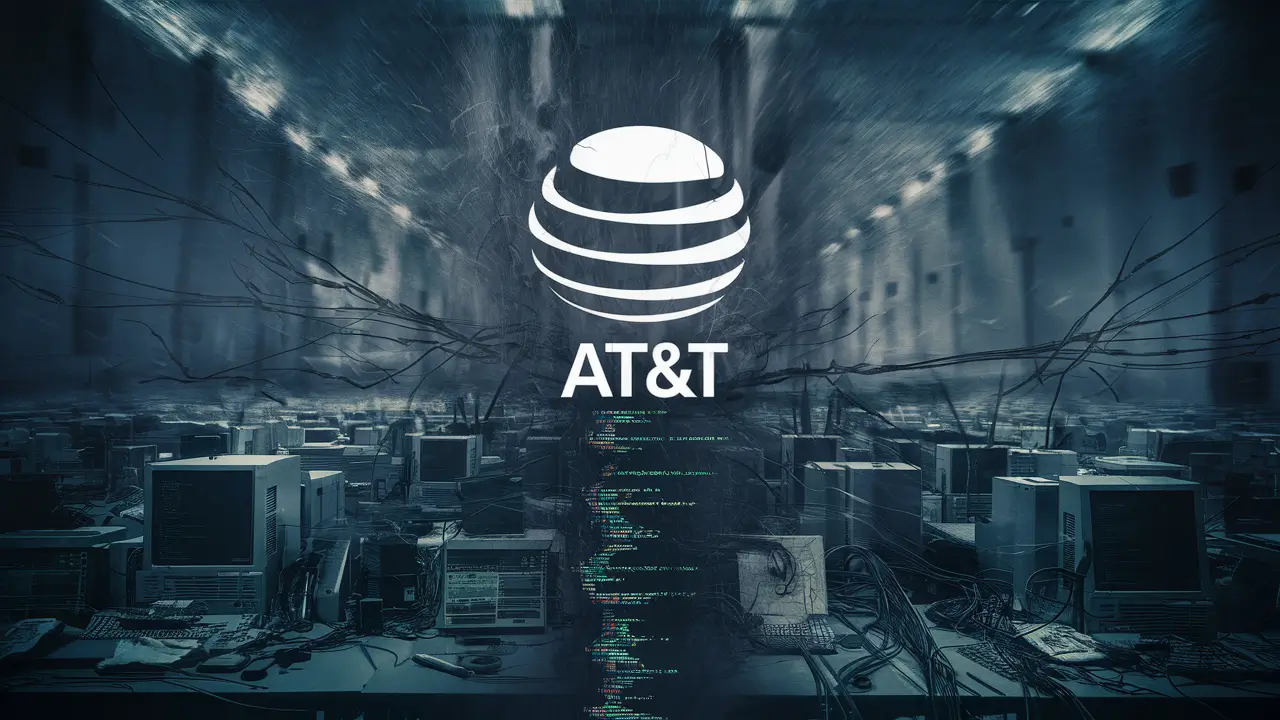
AT&T is undergoing significant strategic shifts, leading to questions about service discontinuations. This post clarifies what services and technologies AT&T is phasing out, why, and what it means for consumers and businesses in 2025 and beyond, ensuring you stay informed about your connectivity.
Understanding AT&T Shutdowns: Why It Matters
In the rapidly evolving telecommunications landscape, companies like AT&T are constantly adapting their infrastructure and services. This often involves the decommissioning of older technologies to make way for newer, more efficient ones. When users search "What is AT&T shutting down?", they are seeking clarity on which services might be discontinued, what the implications are for their existing devices and systems, and how to prepare for these changes. Understanding these shifts is crucial for maintaining seamless connectivity and avoiding service disruptions, especially as we move further into 2025 and beyond.
Current Shutdowns and Phased Decommissioning
AT&T, like many major telecommunications providers, engages in a continuous process of network modernization. This involves retiring older network technologies that are no longer cost-effective to maintain or that are being superseded by more advanced solutions. These shutdowns are typically phased, allowing customers time to transition to newer services. The primary focus in recent years has been on the complete retirement of 2G and 3G networks, a process that has been ongoing and is largely complete in many regions, with final decommissioning efforts wrapping up. Beyond these mobile network generations, AT&T is also actively transitioning customers away from traditional copper-based landline services towards Voice over Internet Protocol (VoIP) solutions.
2G and 3G Networks: A Look Back
The shutdown of AT&T's 2G and 3G networks represents one of the most significant recent decommissioning efforts. These networks, while foundational to mobile communication for many years, are now considered obsolete. The 2G network, launched in the early 1990s, primarily supported voice calls and basic text messaging. The 3G network, which emerged in the early 2000s, brought the first wave of mobile data, enabling rudimentary internet browsing and email on mobile devices. By 2025, the operational costs of maintaining these legacy networks, coupled with their limited data speeds and capacity, made their retirement a strategic imperative for AT&T.
The decision to shut down these networks is driven by several factors. Firstly, the spectrum used by 2G and 3G can be reallocated to more advanced technologies like 4G LTE and 5G, which offer significantly higher speeds, lower latency, and greater capacity. This reallocation is vital for meeting the ever-increasing demand for data services. Secondly, maintaining multiple generations of network infrastructure is complex and expensive. Consolidating into fewer, more robust networks simplifies operations and reduces maintenance costs. Thirdly, many devices that rely solely on 2G or 3G are no longer supported by manufacturers and often lack modern security features.
The impact of these shutdowns was most keenly felt by users of older mobile phones, as well as a vast array of Internet of Things (IoT) and machine-to-machine (M2M) devices that were designed to operate on these older networks. This includes older GPS trackers, alarm systems, medical devices, and even some smart home appliances. AT&T provided extensive communication and resources to its customers, encouraging them to upgrade their devices or switch to compatible services well in advance of the final shutdown dates. For example, many businesses relying on 2G/3G for fleet management or remote monitoring had to invest in new hardware that supports 4G or 5G connectivity. The transition was not always smooth, with some smaller businesses and individuals facing challenges in identifying and replacing affected devices.
Legacy Landline Services and VoIP Transition
Another area of significant change for AT&T involves its traditional copper-based landline telephone services. For decades, these were the backbone of fixed-line communication for homes and businesses. However, with the widespread availability and superior capabilities of broadband internet, AT&T has been actively transitioning customers to Voice over Internet Protocol (VoIP) services. VoIP technology transmits voice calls over the internet, offering a more flexible, feature-rich, and often more cost-effective solution compared to traditional POTS (Plain Old Telephone Service) lines.
The move away from copper landlines is driven by the aging infrastructure of the copper network, which is increasingly expensive to maintain and susceptible to damage from environmental factors. Furthermore, copper lines are not designed to support the high-speed data requirements of modern internet services. By migrating customers to VoIP, AT&T can leverage its existing broadband infrastructure, consolidate network management, and offer bundled services that include high-speed internet, television, and voice. This also aligns with the broader industry trend towards all-IP networks, where all communications, including voice, are transmitted digitally over IP networks.
For consumers, this transition typically means that their home phone service will be delivered through their internet modem or a dedicated VoIP adapter. This can offer advantages such as enhanced voicemail features, caller ID to multiple devices, and the ability to make and receive calls from smartphones using their home number. For businesses, VoIP offers scalability, reduced costs for long-distance calls, and advanced features like unified communications, virtual receptionists, and integration with other business applications. However, the transition requires a reliable internet connection, and power outages can affect VoIP service unless backup power solutions are in place for both the internet modem and the VoIP equipment.
AT&T has been providing customers with information and often offering free or subsidized equipment to facilitate this transition. The process involves scheduling appointments for technicians to set up the new service and deactivate the old copper lines. It's important for customers to understand that their traditional landline phone number can usually be ported to the new VoIP service, ensuring continuity. However, some older devices, like fax machines or older alarm systems that rely on POTS lines, may require specific adapters or upgrades to function with a VoIP service.
Specific Hardware and Device Discontinuations
Beyond the network infrastructure itself, AT&T also discontinues support for specific hardware and devices that are no longer compatible with its current or future network standards. This is most evident with mobile phones. As 2G and 3G networks were shut down, older smartphones and feature phones that were not "4G LTE or VoLTE (Voice over LTE) enabled" became inoperable for making calls or using mobile data on the AT&T network. AT&T has maintained lists of compatible and incompatible devices to help consumers navigate these changes.
The term "VoLTE" is critical here. While a phone might have 4G LTE capabilities for data, if it doesn't support VoLTE, it cannot make voice calls once the 3G network, which was often used for voice fallback, is shut down. This is because the 4G LTE network is primarily designed for data, and VoLTE allows voice calls to be transmitted over this data network. AT&T's policy has been to maintain a whitelist of devices that are certified to work on its network, ensuring they meet performance and security standards. Devices not on this whitelist, even if technically capable, may be blocked from accessing the network.
The implications extend to other connected devices as well. For instance, older cellular-based backup battery systems for home security, certain medical alert devices, and some older vehicle telematics systems that relied on 2G or 3G modems have had to be replaced or upgraded. Businesses using M2M communication for fleet tracking, inventory management, or remote monitoring have faced similar challenges. The lifespan of these devices is often tied to the network technology they utilize. When a network is decommissioned, these devices become effectively useless unless they can be retrofitted with newer modems or replaced entirely.
AT&T's communication strategy typically involves notifying customers who are identified as using affected devices or services. This notification process aims to give individuals and businesses ample time to research and acquire compatible replacements. However, the responsibility ultimately falls on the consumer or business to ensure their devices are up-to-date. This proactive approach to device compatibility is essential for maintaining a robust and secure network for all users.
The Driving Forces Behind AT&T Shutdowns
The decision to shut down older technologies and services is never made lightly. It's a strategic move driven by a confluence of technological advancements, economic realities, and evolving market demands. For AT&T, these shutdowns are integral to its long-term vision of providing cutting-edge communication services.
Technological Advancement and Innovation
The telecommunications industry is characterized by rapid technological evolution. New generations of wireless technology, such as 5G, offer capabilities that were unimaginable with 2G or 3G. These advancements include significantly higher data speeds, lower latency (the delay between sending and receiving data), and the ability to connect a vastly larger number of devices simultaneously. This is crucial for supporting emerging technologies like augmented reality (AR), virtual reality (VR), autonomous vehicles, and advanced IoT applications.
For AT&T, investing in and deploying these new technologies is essential to remain competitive and to meet the growing demands of its customer base. Older networks, by their very nature, are limited in their capacity and speed. Continuing to operate them diverts resources and spectrum that could be better utilized for 4G LTE and 5G services. The transition to newer technologies also enables AT&T to offer a wider range of innovative services and applications that were not possible on legacy networks. For instance, the low latency of 5G is critical for real-time applications, and its high bandwidth is necessary for streaming high-definition video and supporting data-intensive applications.
The development of new standards and protocols also plays a role. As technologies mature, they often become more power-efficient and cost-effective to operate. AT&T's commitment to innovation means it must continually upgrade its infrastructure to leverage these improvements. This includes not only the radio access network but also the core network, which handles data routing and management. The move to an all-IP network, for example, allows for greater flexibility and integration of various communication services.
Spectrum Optimization and Efficiency
Radio spectrum is a finite and valuable resource. Governments allocate spectrum bands for various wireless communications, and telecommunications companies bid for licenses to use these bands. As mobile technology has advanced, the amount of data being transmitted has exploded. To keep pace, AT&T needs to use its allocated spectrum as efficiently as possible.
Older networks, like 2G and 3G, are significantly less spectrally efficient than 4G LTE and 5G. This means they use more spectrum to transmit less data. By shutting down these older networks, AT&T can reclaim the spectrum they occupy and reallocate it to its more advanced 4G and 5G networks. This process, known as spectrum refarming, allows AT&T to increase the capacity and speed of its current networks without needing to acquire new spectrum licenses, which are extremely expensive.
For example, spectrum previously used for 3G might be repurposed to expand 5G coverage or increase its capacity in densely populated areas. This is a critical strategy for meeting the demand for high-speed mobile broadband. The efficiency gains from 5G are substantial; it can support significantly more data traffic within the same amount of spectrum compared to previous generations. Therefore, shutting down less efficient networks is a direct path to improving the overall performance and capacity of AT&T's wireless services.
Cost Reduction and Resource Allocation
Operating and maintaining multiple generations of network infrastructure is costly. Each network requires its own set of equipment, software, maintenance personnel, and power. As older networks become less utilized, the cost per user or per gigabyte of data increases, making them economically unsustainable in the long run.
By decommissioning legacy networks, AT&T can reduce its operational expenses. This includes lower costs for power consumption, hardware maintenance, and the specialized technical expertise required to manage older systems. The resources freed up from maintaining these legacy networks can then be reinvested in areas that offer greater returns, such as expanding 5G coverage, upgrading the core network, or developing new services. This strategic reallocation of capital and operational resources is crucial for maintaining profitability and funding future innovation.
Furthermore, the complexity of managing a multi-generational network increases the risk of errors and security vulnerabilities. Simplifying the network architecture by retiring older components reduces this complexity, leading to a more stable and secure network for all users. The economic argument for consolidation is compelling: a single, robust, modern network is far more cost-effective to operate than several aging ones.
Evolving Consumer Demand
Consumer behavior and expectations have changed dramatically. People now rely on their mobile devices for a vast array of activities beyond basic calls and texts, including streaming high-definition video, online gaming, video conferencing, and using data-intensive applications. These activities require the high speeds and low latency offered by 4G LTE and 5G networks.
The demand for faster, more reliable mobile internet has outpaced the capabilities of 2G and 3G networks. Consumers are increasingly frustrated by slow download speeds and dropped connections when using older devices or in areas with limited coverage. AT&T's decision to shut down older networks is a direct response to this evolving demand. By focusing on newer technologies, AT&T aims to provide the best possible experience for its customers, ensuring they can seamlessly use the latest apps and services.
The rise of the Internet of Things (IoT) has also fueled demand for more advanced connectivity. Billions of devices, from smart thermostats to industrial sensors, are being connected to the internet. These devices often require the high capacity and efficiency of 5G networks, as well as the ability to operate on more energy-efficient technologies. Catering to this growing market necessitates the modernization of AT&T's network infrastructure. The shift towards digital services and connected devices means that the capabilities of older networks are simply no longer sufficient to meet the needs of the modern consumer and business.
Impact on Consumers and Businesses
The decommissioning of older AT&T services and technologies has tangible effects on both individual consumers and businesses, particularly those relying on legacy equipment or services.
Mobile Device Compatibility
The most direct impact for many consumers has been on their mobile phones. As AT&T phased out its 2G and 3G networks, older smartphones and feature phones that were not compatible with 4G LTE and VoLTE (Voice over LTE) became unusable for calls and texts. This meant that millions of devices, many of which were still functional, were rendered obsolete by the network changes. AT&T provided lists of compatible devices, and customers were urged to upgrade to newer, VoLTE-enabled smartphones to ensure continued service.
This situation highlights the importance of understanding device specifications. A phone might be able to connect to 4G for data, but if it doesn't support VoLTE, it cannot make voice calls once the 3G network is gone. For consumers who purchased older phones or received them as hand-me-downs, this transition often meant an unexpected expense to acquire a new device. AT&T offered various trade-in programs and discounts to help mitigate these costs, but it was a significant change for many.
For example, a user with a 3G-only smartphone might have found their phone suddenly unable to make or receive calls after the 3G network was shut down. Similarly, older feature phones that only supported 2G would also cease to function for voice and text. This has also affected some basic cell phones used by seniors or individuals who prefer simpler devices, requiring them to adapt to more complex smartphone interfaces or find specific VoLTE-compatible feature phones.
IoT and Machine-to-Machine (M2M) Devices
The impact on the Internet of Things (IoT) and Machine-to-Machine (M2M) communication is profound. Many IoT devices, especially those deployed in the past decade, were built with 2G or 3G modems due to their widespread availability and lower cost at the time. These devices include:
- Fleet management and GPS trackers: Used by logistics companies to monitor vehicle locations and performance.
- Smart meters: For utilities to remotely read energy consumption.
- Security and alarm systems: Cellular backup for home and business alarms.
- Medical alert devices: For seniors to call for help.
- Industrial sensors: Monitoring equipment in remote locations.
- Point-of-sale (POS) terminals: Some older models used cellular for transactions.
When the 2G and 3G networks are shut down, these devices lose their connectivity and can no longer transmit data or receive commands. Businesses and individuals relying on these systems faced a critical need to upgrade or replace their hardware. This often involved significant investment and logistical challenges, especially for large deployments of devices across wide geographic areas.
AT&T has been working with IoT solution providers to help them transition their devices to 4G LTE or 5G. This often involves replacing the modem within the device or upgrading to a newer device altogether. The move to 5G is particularly important for future IoT applications, as it offers the capacity and low latency needed for more advanced use cases like autonomous systems and real-time industrial automation. The statistics for 2025 show a continued acceleration in IoT adoption, making this transition a critical business imperative.
Home and Business Phone Systems
As mentioned earlier, AT&T's move away from traditional copper landlines impacts home and business phone systems. While this is a transition to a newer technology (VoIP) rather than a complete shutdown of service, it still represents a significant change for users accustomed to POTS (Plain Old Telephone Service).
For consumers: Traditional landline phones will eventually cease to function if they are not connected to a VoIP service. This means that if you have a basic corded phone plugged into a wall jack, and AT&T has transitioned your service to VoIP, that phone will no longer work unless it's connected through a VoIP adapter. Many modern cordless phone systems are compatible with VoIP, but older analog-only phones might require an adapter. The primary benefit of VoIP is that it runs over your internet connection, often leading to cost savings and more features.
For businesses: The impact can be more complex. Businesses often have integrated phone systems (PBXs) that rely on traditional phone lines. Migrating these systems to VoIP requires careful planning. This might involve upgrading the PBX system, installing VoIP phones, and ensuring sufficient internet bandwidth. Businesses that rely on fax machines or older alarm systems connected to POTS lines will need to find VoIP-compatible solutions or use adapters. The advantage for businesses is the potential for significant cost savings on long-distance calls and the ability to implement advanced communication features that improve productivity and customer service.
Emergency Services and Alarms
One of the most critical areas affected by the shutdown of legacy networks and copper lines is emergency services and alarm systems. Many older home security systems, medical alert devices, and elevator emergency phones rely on traditional phone lines or 2G/3G cellular connections for their primary communication path.
Alarm Systems: Cellular backup for alarm systems is a common feature, providing a communication channel if the primary internet or phone line is cut or disabled. If these backup systems use 2G or 3G modems, they will stop working. Alarm companies have been actively working with their customers to upgrade these systems to use 4G LTE or 5G cellular modules, or to utilize IP-based communication over broadband internet.
Medical Alert Devices: Similar to alarm systems, many personal emergency response systems (PERS) used by seniors and individuals with health conditions rely on cellular connectivity to contact emergency services. If these devices are using older cellular technology, they will become inoperable. Manufacturers of these devices have been providing updated models that are compatible with newer networks. It is crucial for users of these devices to verify their compatibility with AT&T's current network standards.
Elevator Phones: Regulations often require that emergency phones in elevators be operational at all times. Many of these have historically used traditional phone lines. As these lines are phased out, AT&T and elevator maintenance companies have been working to transition these to cellular or IP-based communication solutions to ensure continued emergency communication capabilities.
The transition in these critical areas requires careful coordination between AT&T, device manufacturers, service providers, and end-users to ensure that essential safety and emergency services remain uninterrupted.
Preparing for AT&T Shutdowns in 2025 and Beyond
Navigating the changes brought about by AT&T's network modernization requires a proactive approach. By understanding your current services, checking device compatibility, exploring upgrade options, and staying informed, you can ensure a smooth transition and avoid service disruptions.
Understanding Your Current Services
The first step is to identify exactly which AT&T services you are using and what technology they rely on. This is particularly important if you have multiple services or devices connected.
- Mobile Devices: Check your smartphone or feature phone model. Look for specifications related to network bands (e.g., 4G LTE, 5G) and VoLTE support. If you have an older device, it's highly likely it may be affected.
- Home Phone: If you have a traditional landline, determine if it's a copper-based POTS line or a VoIP service delivered over your internet connection. If you're unsure, contact AT&T.
- Internet of Things (IoT) Devices: If you have any connected devices beyond your primary mobile phone (e.g., smart home devices, medical alerts, GPS trackers), identify their connectivity type. Many of these will have cellular modems that might be 2G or 3G.
- Business Services: For businesses, a comprehensive audit of all communication systems, including phone lines, data connections, and any M2M devices, is essential.
Gathering this information will give you a clear picture of your potential exposure to upcoming service changes.
Checking Device Compatibility
Once you understand your services, you need to verify if your devices are compatible with AT&T's current and future network standards. AT&T provides resources to help with this:
- AT&T Device Compatibility Lists: AT&T maintains lists of devices that are compatible with its 4G LTE and 5G networks. These lists are regularly updated. You can typically find these on the AT&T website by searching for "compatible devices" or "4G LTE phones."
- VoLTE Check: For mobile phones, ensure your device explicitly supports VoLTE. If your phone doesn't support VoLTE, it will not be able to make calls on AT&T's network after the 3G shutdown. Some phones may require a software update to enable VoLTE.
- IoT Device Manufacturers: For IoT and M2M devices, contact the manufacturer directly to inquire about their device's network compatibility and available upgrade paths.
- Alarm and Medical Device Providers: If you use a cellular-based alarm system or medical alert device, contact your service provider to confirm its network compatibility and discuss upgrade options.
Being diligent in checking compatibility can prevent unexpected service interruptions.
Exploring Upgrade Options
If your devices are not compatible, you will need to consider upgrade options. AT&T offers a range of services and devices:
- New Smartphones: AT&T offers a wide selection of 4G LTE and 5G smartphones from various manufacturers. Look for devices that are explicitly listed as compatible and support VoLTE.
- VoIP Services: If you have a traditional landline, explore AT&T's VoIP offerings. These can often be bundled with internet services and may provide additional features and cost savings.
- IoT and M2M Solutions: For businesses and individuals using IoT devices, investigate newer devices with 4G LTE or 5G modems. Many providers offer solutions specifically designed for the evolving network landscape.
- AT&T Promotions: Keep an eye out for promotional offers from AT&T, such as trade-in deals on new smartphones or discounts on bundled services, which can help offset the cost of upgrades.
Planning and researching your upgrade options in advance will allow you to make informed decisions and potentially secure better pricing.
Staying Informed with AT&T Communications
AT&T communicates upcoming network changes and service discontinuations to its customers through various channels. It's important to pay attention to these communications:
- Customer Notifications: AT&T typically sends emails, text messages, or mail to customers whose services or devices are affected by upcoming shutdowns. Ensure your contact information with AT&T is up-to-date.
- AT&T Website and Support Pages: The AT&T website is a valuable resource for information on network changes, device compatibility, and FAQs.
- Customer Service: If you have any doubts or need personalized assistance, don't hesitate to contact AT&T customer support. They can help you understand your specific situation and guide you through the necessary steps.
Proactive engagement with AT&T's communications and support channels is key to a successful transition.
Future Outlook and AT&T's Strategic Direction
AT&T's ongoing network modernization, including the decommissioning of older technologies, is a clear indicator of its strategic direction. The company is firmly focused on building and expanding its 5G network, which is seen as the foundation for future innovation and growth. This includes not only enhanced mobile broadband but also critical infrastructure for the Internet of Things, fixed wireless access, and advanced enterprise solutions.
The transition to an all-IP network architecture is a long-term goal, streamlining operations and enabling greater flexibility in service delivery. This move away from legacy copper-based infrastructure and older wireless technologies is essential for AT&T to remain at the forefront of the telecommunications industry. By investing heavily in 5G and fiber optics, AT&T is positioning itself to capitalize on emerging trends like AI, edge computing, and the metaverse, all of which will demand robust, high-speed, low-latency connectivity.
In 2025 and beyond, expect AT&T to continue optimizing its spectrum usage, further enhancing its 5G capabilities, and potentially exploring new network technologies. The focus will remain on providing a seamless, high-performance experience for consumers and businesses, driven by the latest advancements in communication technology. For users, this means a continuous need to stay aware of their device compatibility and service offerings to fully leverage the benefits of AT&T's evolving network.
In conclusion, the question "What is AT&T shutting down?" primarily refers to the ongoing decommissioning of its 2G and 3G wireless networks and the transition from traditional copper landlines to VoIP services. These strategic moves are driven by technological advancements, the need for spectrum efficiency, cost reduction, and evolving consumer demand for faster, more capable networks. While these transitions necessitate upgrades for many users, particularly those with older mobile phones or legacy communication systems, AT&T provides resources and support to facilitate the process. By understanding your current services, checking device compatibility, and staying informed, you can effectively prepare for these changes and ensure uninterrupted connectivity in 2025 and beyond, embracing the future of telecommunications.

